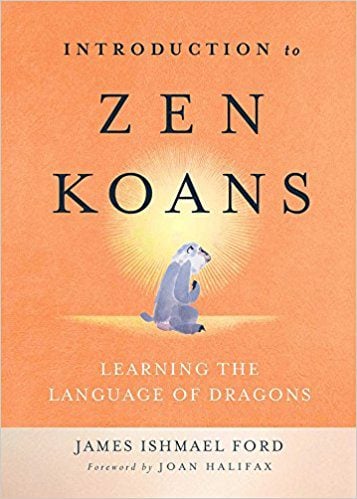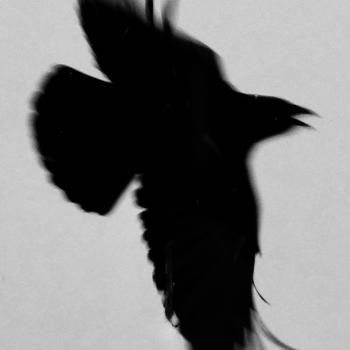 This month we’re working the theme of being on the outside. Bob Dylan expressed it like this:
This month we’re working the theme of being on the outside. Bob Dylan expressed it like this:
Always on the outside of whatever side there was,
When they asked him why it had to be that way,
“Well,” he answered, “just because.”
Turns out that many people who come to Zen practice resonate with old Bob’s sentiment. Given that I was raised from a young, feral pup in just-sitting Zen and then was adopted as an adult into kōan-introspection Zen, I feel Bob too. Even in the Zen community, where I’ve spent most of my adult life and might seem like an insider to many, the feeling lingers.
Some of that is due to the misunderstandings between groups, and particularly, in my view, from those in just-sitting Zen and how they regard kōan introspection. I’ll be coming back to this in a near-future post.
Enter James Myōun Ford Rōshi’s new book, Introduction to Koans: Learning the Language of Dragons. James, deeply grounded in kōan introspection, has long straddled the two ways of Zen. And his broadening Unitarian Universalist background has gentled his presentation of kōan as an aspect of a reformed Sōtō Zen.
Ford Rōshi’s new book is an excellent resource especially for students interested in exploring the kōan way AND for teachers and students of just-sitting Zen. My bet is that a careful read will dispel many myths about kōan work. Not that this book is the one and only way to see it – kōan work, like just-sitting Zen, has many flavors and focus points. And as always with us large-brained primates, to paraphrase Max Weber, there is more difference within the kōan group than between the kōan group and just-sitting Zen.
For Ford Rōshi, Zen is about awakening, and he focusses on awakening throughout this latest offering. The root word “awake,” for example, is found on 53 of 222 pages. And both Hakuin (representing the kōan-introspection tradition) and Dōgen (representing the just-sitting tradition) appear on 18 of 222 pages. Now that’s impressive balance!
“…The poetry of Zen,” he writes, “points to the heart’s awakening, that true entrusting into the mysterious reality that is this world. The disciplines, the practices all have this one point—the healing of a broken world, and with that the healing of our own broken hearts (p. 40).”
“Healing” is Ford Rōshi’s language for the abrupt, nondual verification referred to as kenshō:
“In kōan introspection, doubt and faith travel together. Each informs the other. It is our relentless presence to doubt and faith that takes us to the gate of nondual insight. Indeed, both the path to the gate and the gate itself are discovered within that relentlessness, that willingness to not turn away. This relentlessness is Great Determination.”
You’ll find that Ford Rōshi generously provides the context for kōan introspection, “Part One: The Heart of Zen,” grounds his argument in the historical Buddha, ancient China, and then brings us home to today, when “…the koan curriculum is revitalized and flourishes in Hakuin’s school (33).”
“Part Two: The Practices of Zen,” begins with the basics of how to do zazen with chapters on the body, breath, concentration states, and then touching on the unity of just-sitting and kōan introspection.
“What we’re being invited to is something else. It is taking the whole, being present to it all, without judgment. It is being fully present to this ordinary body that you were given by your parents. And here’s the secret teaching: your body has within it a full and complete capacity to know the Buddha’s wisdom and virtue. Not someone else’s body, but yours. And it isn’t found some other place. Rather, it is found here. Just here. Always, just here.”
Next Ford Rōshi introduces kōan introspection as well as doubt, the key-word method, the mu kōan, and the scope of kōan introspection as practiced today in what Ford Rōshi calls the “Harada-Yasutani Sōtō-reformed kōan curriculum.”
“Part Three: Living Zen” looks at the various styles in the history of Zen, Zen and Western Culture, and the teacher-student relationship. The book is sprinkled with Ford Rōshi’s inclusive and loving style of kōan commentary.
“Just open your heart to what is going on,” he writes. “The autumn dew is always with us, the full moon is never very far away. Notice the clear clean moments as they present, but our invitation for this summer is to be present, to wander out following the scented grasses. We’ll find it all in the scented grasses.”
Finally, Ford Rōshi points to the endless journey of the Zen way in all it’s forms by pointing to Hakuin’s “not yet” kōan. That, by the way, is the whole kōan – “Not yet!” So you’ve completed the kōan curriculum. Well, “Not yet!” buddy.
“I suggest it is also a reminder,” writes Ford Rōshi, “that we never cease training. However skillfully we have delved into the Great Matter, as the old Zen saying goes, ‘Shakyamuni is still practicing.'”
My heartfelt wish and expectation is that Introduction to Koans: Learning the Language of Dragons will contribute to mutual understanding and appreciation within the Zen community and will clarify the Zen path, encouraging new students to throw themselves into the great journey of the Zen way.












